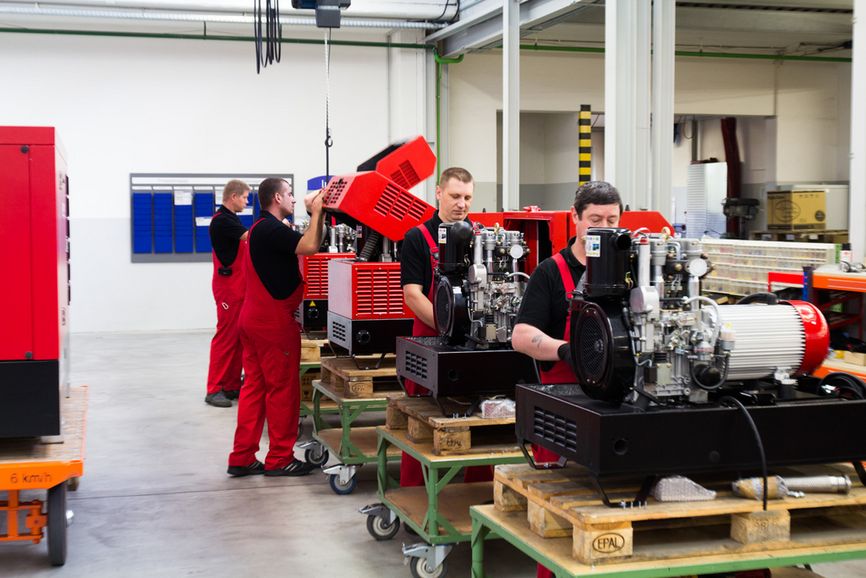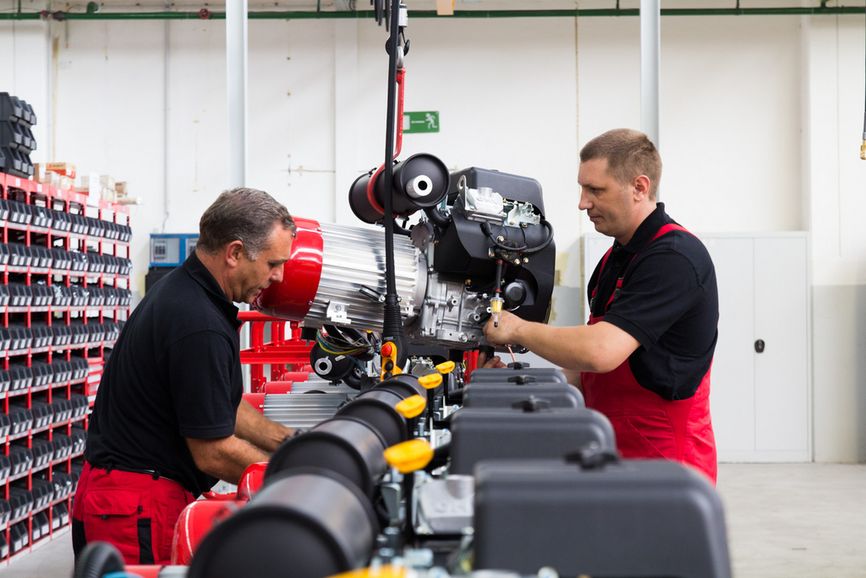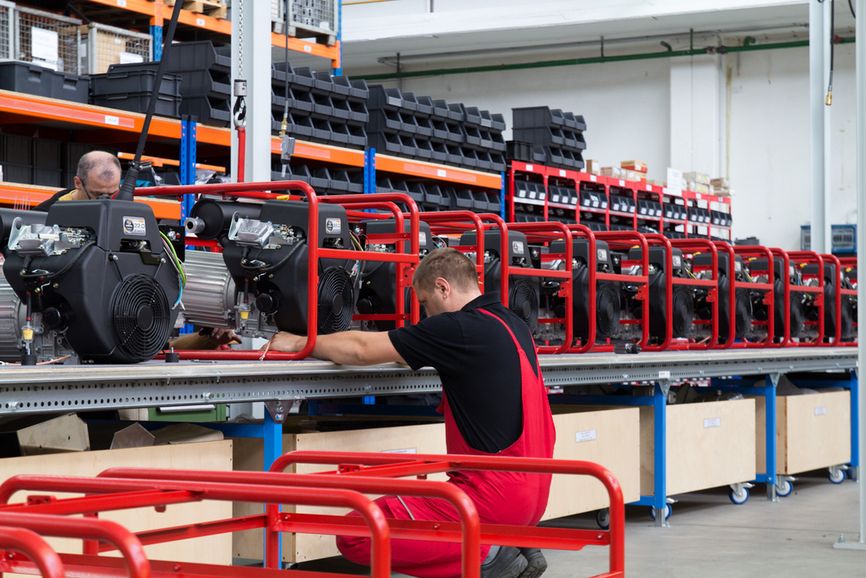
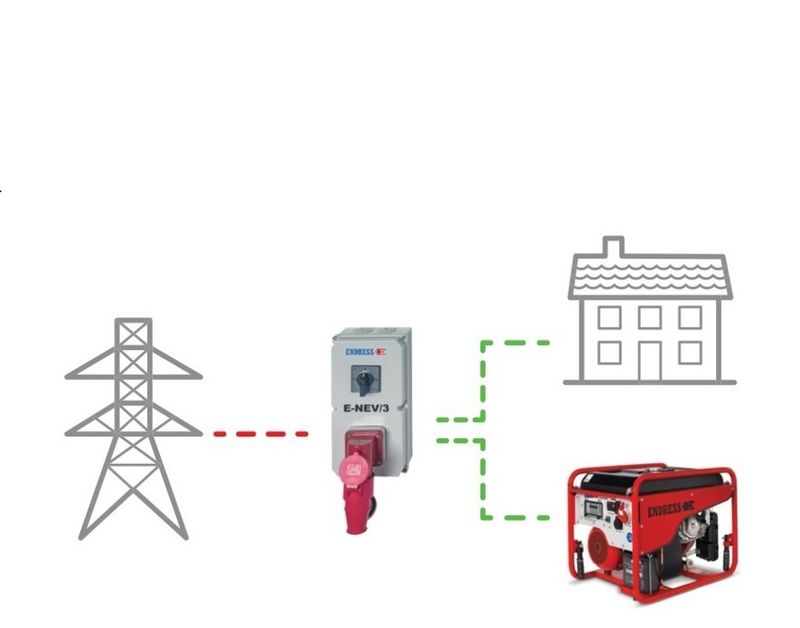
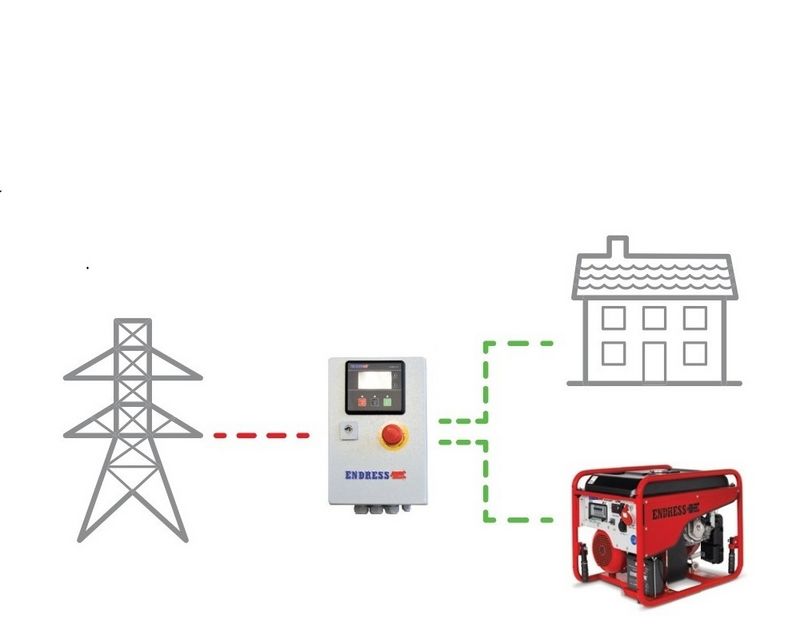
Information about the emergency power supply
There are several options available for creating a simple but efficient emergency power supply.
We wish to show you some practical tips and ways for you to safeguard your building against a power cut.
Emergency power supply with manual switchover
In this variant a power generator is connected to the supply distributor installed in the house if there is a power failure and is started manually.
• Economically favourable acquisition costs
• Simple installation by an electrician
• Emergency power supply operation can only be guaranteed if the power generator is manually started after a power failure
• Security of supply is not guaranteed
ENDRESS supply distributors E-NEV
• Manual switchover between the public network and the generator
• Installation takes place by electricians between the mains network line and the junction box in the building (or on a special line for power consumers authorised to use emergency power)
• Secure switchover is secured through physical separation of both networks
Emergency power supply with automatic switchover
In this variant an installed power generator is started and stopped automatically if there is a power failure. You do not have to be at home in order to protect your house if there is a power failure.
• Automatic Start-Stop operation in the case of a power failure
• Simple installation by an electrician
• Security of supply is guaranteed
• Acquisition costs somewhat higher than for manual operation
ENDRESS Emergency Power Automatic E-ATS
• The E-MCS 5.0 automatic control panel for monitoring the public power grid and controlling the attached generator
• Switchover protections integrated in the stable metal housing IP 54
• Connector blocks for 400V or 230V building mains feed
• Charger for charging the battery on the generator
• A firmly cabled control line to the alternator, 7 metres long
• Plug-and-Run plug connection for an ENDRESS power generator Temperature-dependent choke control system
Important!
Home installation and power feed must be handled only by a licensed electrical contractor. This guarantees safe and proper installation. The company will also be glad to advise you when selecting the correct emergency power supply. Tell your energy supplier about your plan and be sure of your power supplier’s terms and conditions in the general terms and conditions document. The regulations vary state by state.
Installation location for a generator
Also when its sounds quite tempting - a generator must not be run inside a closed building! The installation location must always be selected in such a way that there is adequate cooling air present and exhaust gases can escape into the open unhindered. Installation within buildings is only permissible in specially provided rooms. Please ask your district chimney sweep for advise if you have any questions. When installed outdoors, the generator should be fitted with some form of protection against the weather in order to prevent moisture getting in.
230V or 400V - which version is the correct one for me?
If you need a 400V power feed in an emergency (for example a cooker connection, workshop machines, etc), then a 400V supply is a correct criterion for you. There are some things to take into consideration concerning feed into the power network. 400V networks may only be supplied by a generator that is fitted with phase correction or a phase checking system in order to avoid any asymmetric loading (overload on a phase).
This could damage attached power consumers (for example televisions, computers). Our generators from the DUPLEX series have an electronic phase control system fitted as a standard fitting that allows feeding into a household network. All ENDRESS generators can be used for providing a 230V supply.
Petrol, diesel or gas? What is a suitable emergency power supply?
| Advantages | Disadvantages | |
|---|---|---|
| Petrol | • Economically favourable acquisition costs • Small, light and mobile power generator due to the design of the engine | • In case of a power failure the local filling station can also not pump any petrol |
| Diesel | • Diesel fuel is somewhat more economical to use | • Units are large and heavy due to the model of the engine • Limited mobility • High acquisition costs • Local petrol stations won't be able to pump any diesel in the event of a power failure |
| Gas | • Operation is optionally possible with natural gas or liquefied gas • Residue-free combustion • Very economic fuel costs • No accumulation of resins on the carburettor if unused for longer periods | • Limited mobility when using natural gas |

